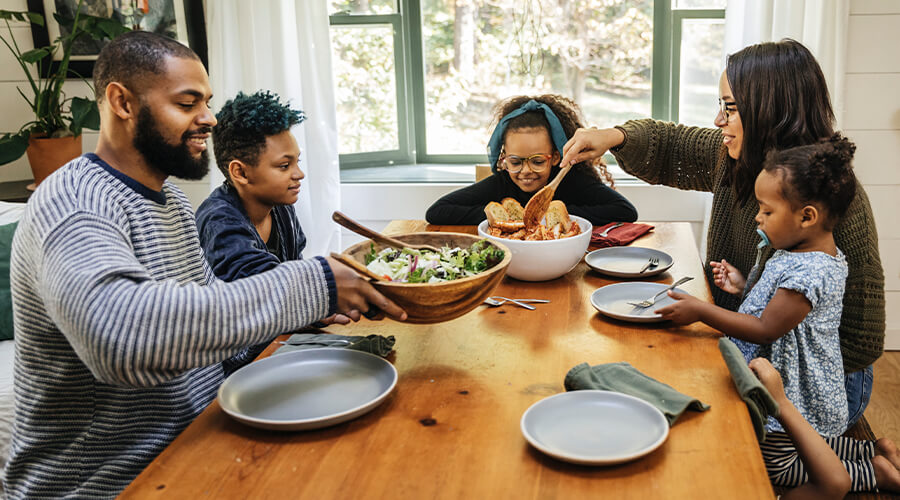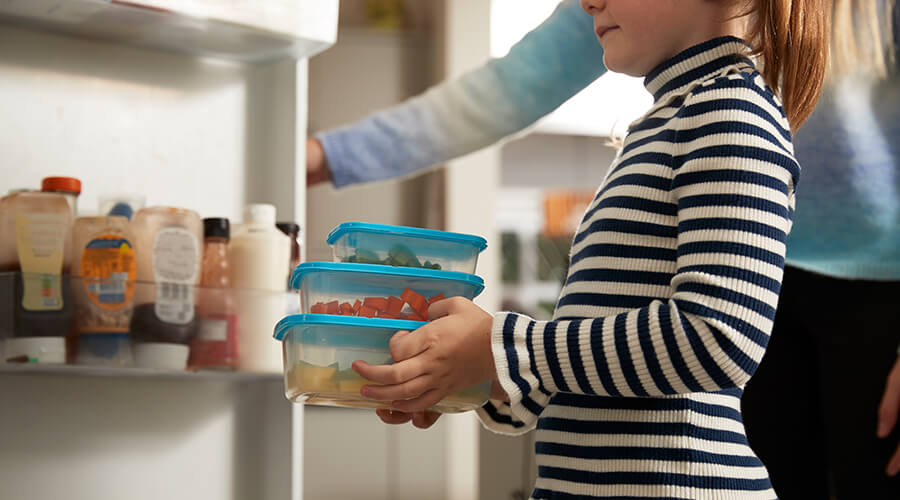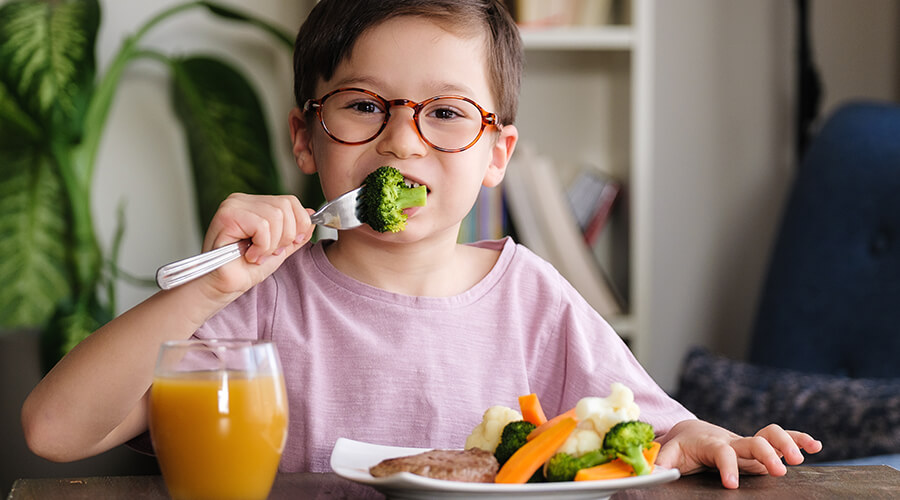Whether your kids are picky eaters or busy with after-school activities, healthy eating for families can be tricky to tackle. We have practical tips and recipe ideas from a registered dietician to pave the way for balanced, enjoyable meals that support wellness for your whole family.
“It’s a myth that you need to spend a ton of time in the kitchen cooking to eat healthy,” says Alyssa Bixler, registered dietitian at OhioHealth. “The truth is that nutritious food can and should taste good, and it doesn’t have to be hard to prepare.”

Eating healthy as a family
Food is fuel, and children need a balanced diet to grow and feel their best. For most children and adults, healthy meals should contain a serving of protein, fruits and vegetables, whole grains and low-fat dairy products, while limiting saturated fats and sugars and avoiding processed foods. For help with understanding portion sizes and ideas for serving suggestions, parents and caregivers can use the resources at www.myplate.gov, a tool from the US Department of Agriculture.
Studies have shown that sitting down to eat a meal with loved ones has tremendous value. Alyssa explains that in addition to providing more nutritional balance, family mealtimes have been shown to boost academic performance and reduce mental health disorders.
“Sitting down to eat a healthy meal is worthy of our time,” says Alyssa. “It’s easier to keep a habit than to change one. Eating healthier foods should be a priority and something we all look forward to.”
Dining out can be a great way to encourage your child to eat new foods and cuisines. When it comes to eating at restaurants or ordering takeout, be strategic about where you go. If you’re ordering takeout, Alyssa suggests ordering only a main course and providing side dishes such as cut veggies, salads or fruit yourself. In addition, she says that one of the best things we can teach our children is to drink and enjoy plain water. That’s because drinking soda and other beverages with added sugars and no nutritional value can be habit-forming.

Healthy meal planning
When it comes to quick and healthy meals and snacks, Alyssa says there are plenty of easy options that feature several food groups at once, such as pizzas made with whole wheat tortillas or all-in-one sheet pan dinners. Both options are a great way to get kids involved in making their meals using ingredients they enjoy eating. Another idea is to mix and match store-bought and homemade items. A rotisserie chicken from the grocery store is a great option when served alongside a salad or frozen vegetables, whole grain crackers and pre-cut fruit.
Because we tend to eat the food that’s available to us when hunger strikes, having healthy snacks and nutritious meals on hand can help encourage your family to make healthier choices. Alyssa says that meal planning is a great way to make sure you have healthy food options available, but she stresses that you need to decide what style works best for you and your family.
“Some people enjoy very structured plans and have a set menu for each day of the week, while other families prefer to buy the ingredients for a few meals each week and have a more flexible schedule,” says Alyssa. “Meal planning isn’t one size fits all, and it doesn’t have to look a certain way for it to be effective.”

Advice for picky eaters
Because many children, older kids and even teens can be resistant to trying new foods, Alyssa suggests serving new foods alongside preferred foods. She stresses that offering children a wide range of foods is an investment in helping them develop healthy eating habits. Curbing a snack habit is another important step in getting children and teens to enjoy and eat healthy meals. Alyssa says that if kids aren’t hungry at mealtimes, they are often more resistant to trying new foods.
“When it comes to getting kids to eat new foods, I think of it as a division of responsibility,” says Alyssa. “As parents, it’s our job to offer our kids a variety of foods to sample and then trust them to make choices based on what their body needs.”
Getting kids involved in the kitchen can seem like a lot of extra work. However, Alyssa encourages parents to try it since cooking teaches children important life skills and offers many learning opportunities. She explains preparing meals with kids often requires a change in mindset, in addition to setting aside the time.
“It’s absolutely worth the extra time, effort and mess to teach your kids about making healthy food choices and how to prepare their favorite meals,” says Alyssa. “Involving them in the cooking process increases the chance that they will try something new. And the bonus is the extra time you spend together.”





